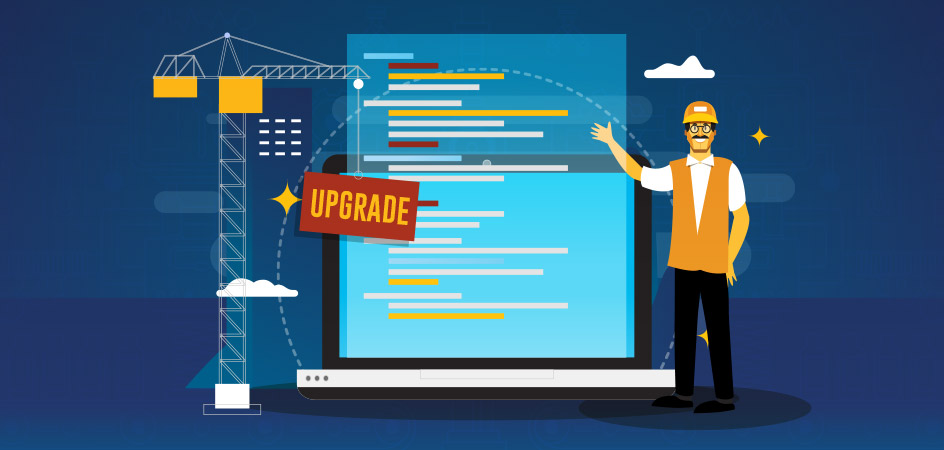
How to Take Your Software Release Management Process to the Next Level
Posted by Walid Abou-Halloun Date: Apr 5, 2021 10:00:09 AM
Angry clients. Downtime. Bugs.
Sound familiar? If yes, you might need to have a look at your release management process.
The world of IT business is constantly evolving and improving. You simply can’t afford to push out average software releases. Despite this, a significant 75% of issues are the result of changes in software or its environment.
To prevent costly delays and keep your organisation’s operations running, you need to invest in a robust release management process.
Successfully releasing new software can be full of complications. Learn how to improve your software release management process for a better end result.
What is Soft Release Management?
Has your company ever needed to make a significant software change? If they have, the chances are that you’ll probably already appreciate the need for a reliable release management process.
In order to thrive, software projects need support, investment and a great deal of hard work. The nurturing and dedication required is sometimes underestimated, leading to poor outcomes.
At the end of the day, a huge amount of work has gone into creating the actual software. It only makes sense that the same amount of work should go into the deployment of that software.
Software release management ensures that when your software is built, it’ll be successfully and efficiently deployed to the people who actually want to use it.
This provides the ideal opportunity to satisfy existing customers and even win over new ones.
Software Release Management Process
For every new product release, release management must occur. Requests for changes to a product also require software release management.
From development and testing to deployment, software release management oversees all the stages involved in a software release.
Release management processes vary depending on the organisation and its needs. Each organisation should customise their steps. But, there are a few key steps to release management. Keep reading to find out what they are.
What’s the Current State of Release?
First things first. You can’t fix something without understanding what it is and where it’s broken.
Unless you fully understand how something needs to change and improve, it’s pointless starting the process.
Therefore, the first step in improving a release management system is to cultivate a detailed picture of the current release process. This can start by having walk-through sessions with individuals central to the software process.
These sessions will offer valuable insight into the current state of things. It’ll be essential in gauging how much work is necessary.
A bad scenario would be if you find out that there’s still software waiting to be released months after it’s completed. Along with this, you may find limited and undermanaged test environments.
If this is the case, they’ll be out of date and unusable.
In bad situations like this, you’ll find that overall staff commitment and morale is low. While this can be a challenge, they’ll most likely be relieved to have support from you.
No matter how serious the situation is, it’s important to speak to those on the ground. They’re the ones with the inside info after all.
What’s the Plan?
Remember, knowledge is empowering. It’s a key part of moving forward and improving the release process. Once you have a better understanding of the current state of release, you can start to plan.
The planning stage of a release process is perhaps the most time intensive of all.
This is where your entire release finds structure from beginning to end.
A clear, defined release plan is critical in helping your team stay on track. It ensures that requirements and standards are properly met. In addition, it offers peace of mind for all involved.
A robust plan that covers all bases means that there’ll be no surprises that’ll derail the process.
As far as possible, the plan should account for all options. There are a variety of ways to approach a release plan. This means there’ll be one to suit your specific needs.
Regular Release Cycle
Now we have a picture of the current state of the process and a plan for the future, we can establish a regular release cycle.
A helpful way to think about the release cycle is to see it in terms of the heartbeat of the project. While the engineering team is the heart.
Establishing a regular release cycle is vital because it provides the chance to discuss non-functional testing the software may need. It also offers a timetable for stakeholders. It informs them about when they can expect functionality again.
Importantly, it creates this routine. All teams can then align with and trust the routine. This helps teams like engineering and marketing to combine efforts and follow the same timeline. This, in turn, improves the employee satisfaction of people working in software.
It also gives customers confidence in the fact that what they ordered will be delivered.
Accuracy is Key
It’s critical to make release cycles as accurate as possible. Ideally, tests should occur before the release. Unrealistic dates are one way to ensure a release process fails.
It’s possible that a release cycle is tested out a few times before an accurate one is finalised. The only to find out if a cycle is feasible is to test it out.
It’s important to keep in mind that a release cycle isn’t about when the customer wants the release. The key element is ensuring the release occurs at the right moment. When it reaches the appropriate level of quality.
One way to ensure full input and support from customers is involving them in the process. Engaging them in determining the cycle ensures they’re updated and aware of the process.
Test & Review
When reengineering a process, a key guiding principle is to review the results along the way. Work and review, repeat. This is a good way to think about it. Reviewing results along the way is a cyclic approach allowing for the desired end results.
Documenting the results along the way is essential. If regular documentation isn’t done, it’ll be difficult to review the work along the way. Recording what happens and how it happens is critical in this process.
Release management best practices include documentation that people can read easily and act on. It should be simple and clear so that it can be followed by both technical people and others.
In order to improve your SW release management, create minimal but effective documentation at every step. Record what was built, how it was built and what steps happened to make it work.
In order to ensure the process is easy to follow, test the sequence along the way. Document each step as it’s completed. This will form a critical basis for the installation instructions.
In order to check if the documentation is indeed simple and clear enough, it’s helpful to do a dry run, using only the documentation. This allows the actual people who’ll need to use it to amend, extend or improve the documents.
Importantly, this ensures the software release process becomes more inclusive. Everyone is encouraged to weigh in on the documentation in an effort to make it as workable and effective as possible. This, in turn, guarantees the process is more widely adopted with better quality.
SW Release Management
While it’s common to think of Release Management as the final promotion of a component into a production environment. It’s critical to take a broader view of the release management process.
As technology improves rapidly and becomes more fluid and advanced, IT professionals face increasing pressure. They’re expected to have a full understanding of new technology. While also expected to understand whether the new technology is more effective than previous systems.
IT professionals are expected to understand whether new technology addresses existing challenges. The strategic goals of a company often rely on the opinions of these professionals. The pressure is, therefore, huge.
For this reason, it’s critical that IT professionals have access to consultants and support. The varied challenges IT professionals must face require that they’re able to seek support from skilled project management.
The Next Steps
By now, it’s clear that communication, transparency, and consistency are all central to delivering regular, structured releases.
It’s simple. Lock in release windows and stick to them. And deliver regular, structured releases to guarantee customer confidence.
Now we know more about how to take software release management to the next level, it’s helpful to look at the next steps. Who is able to support your organisation through the software release process?
We’re more than happy to guide you through the process of taking your software release to the next level. If you’re looking to harness your in-house skillset whilst simultaneously supplementing outside expertise and know-how, contact us.




